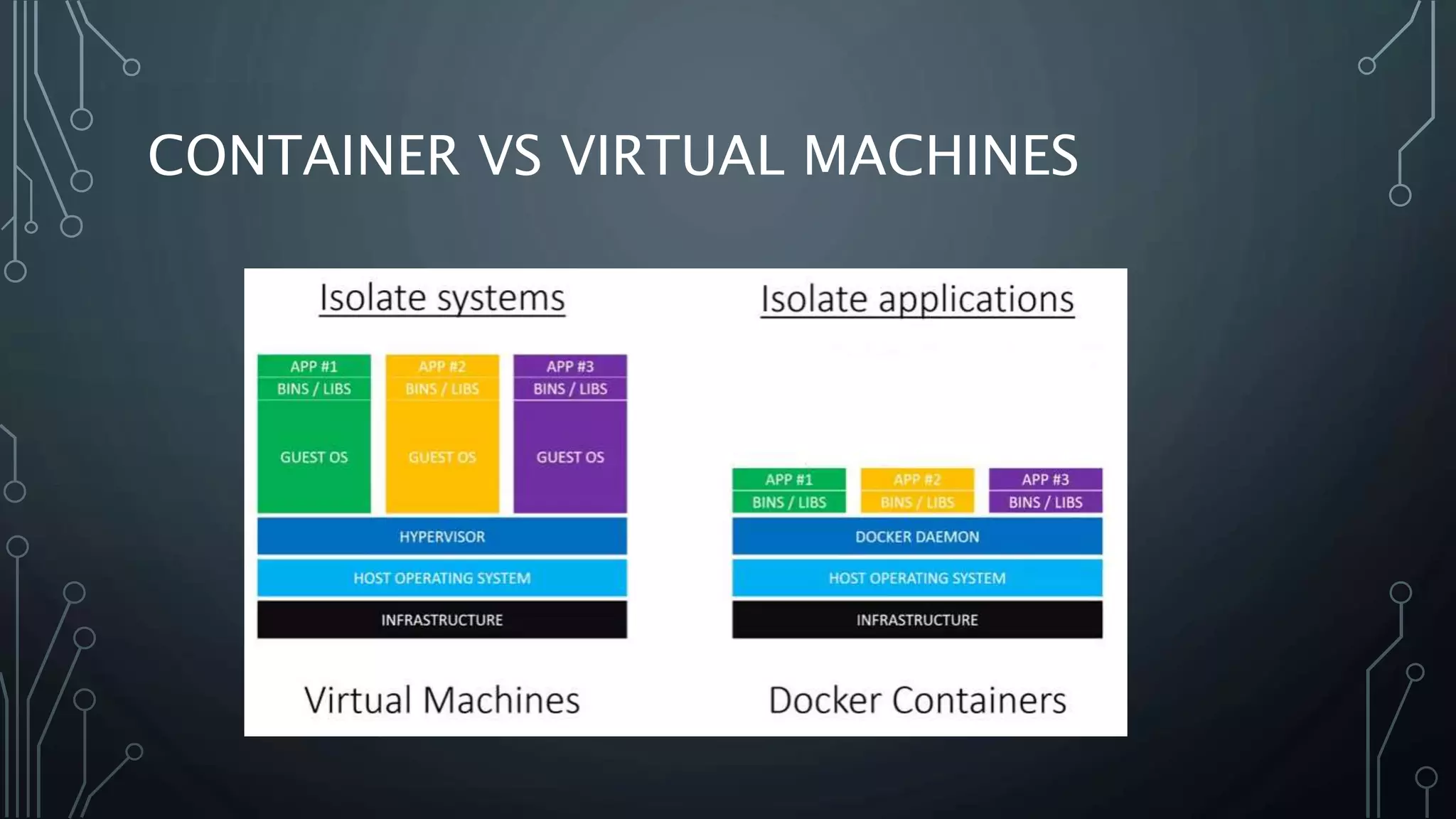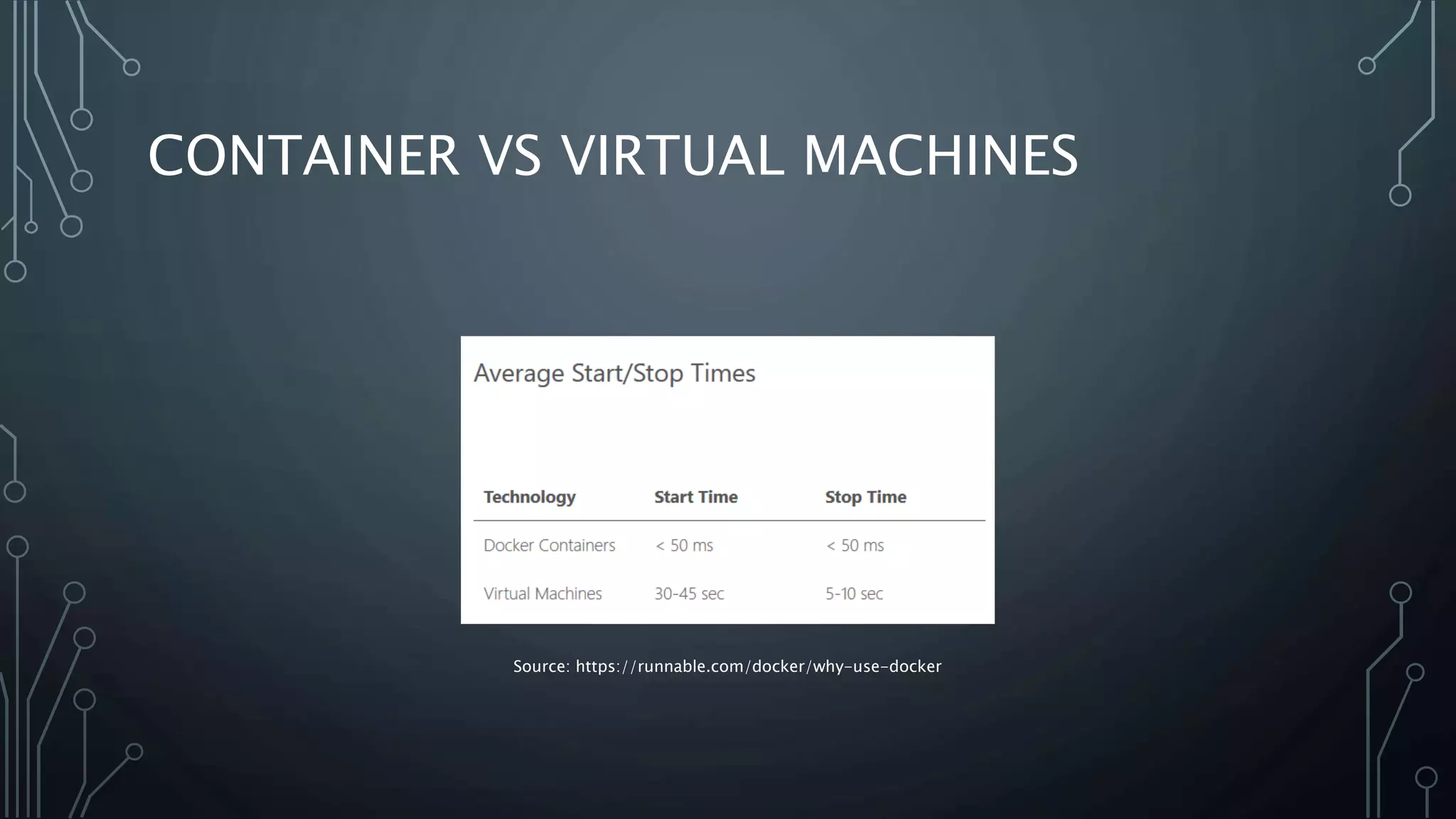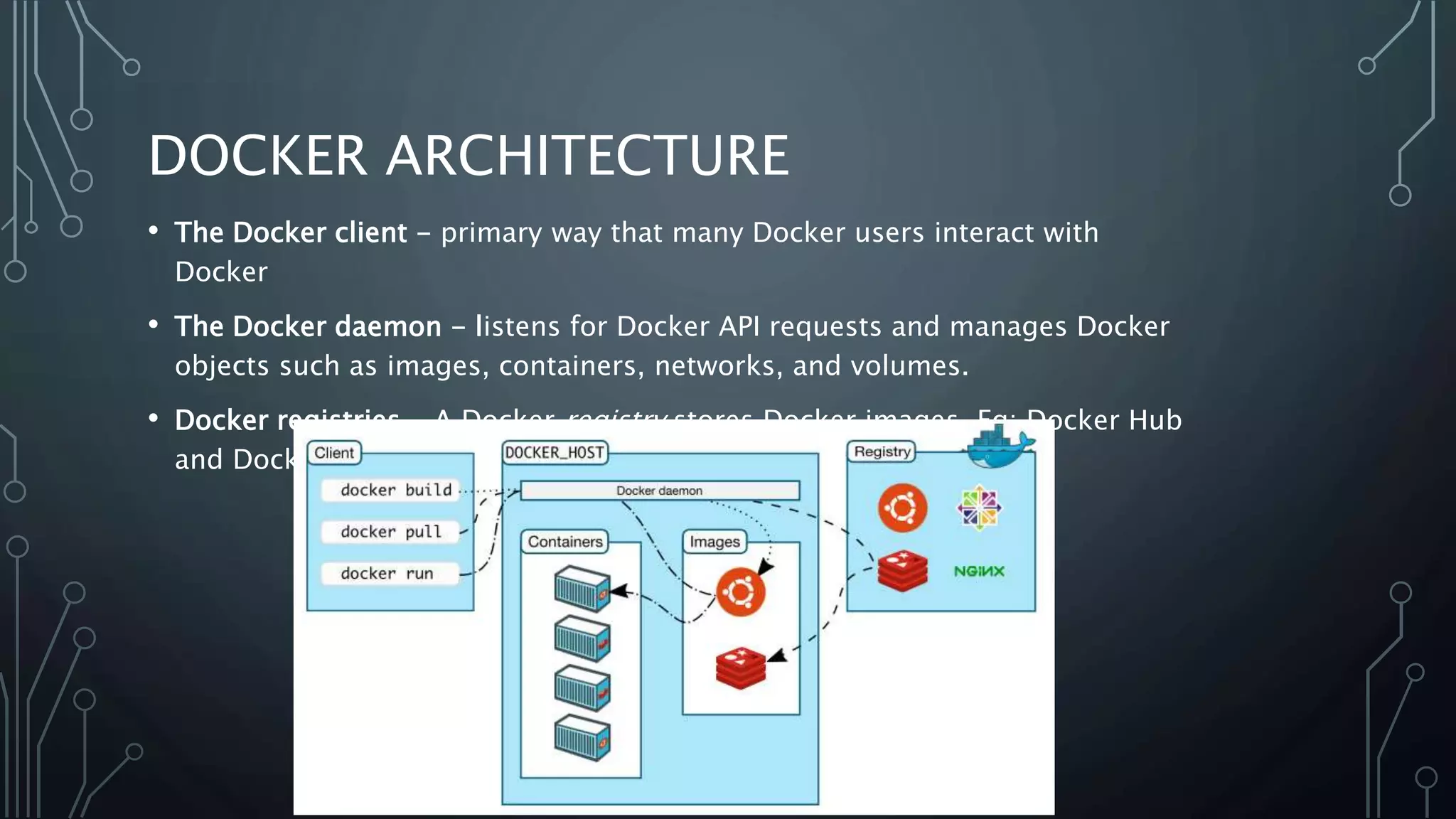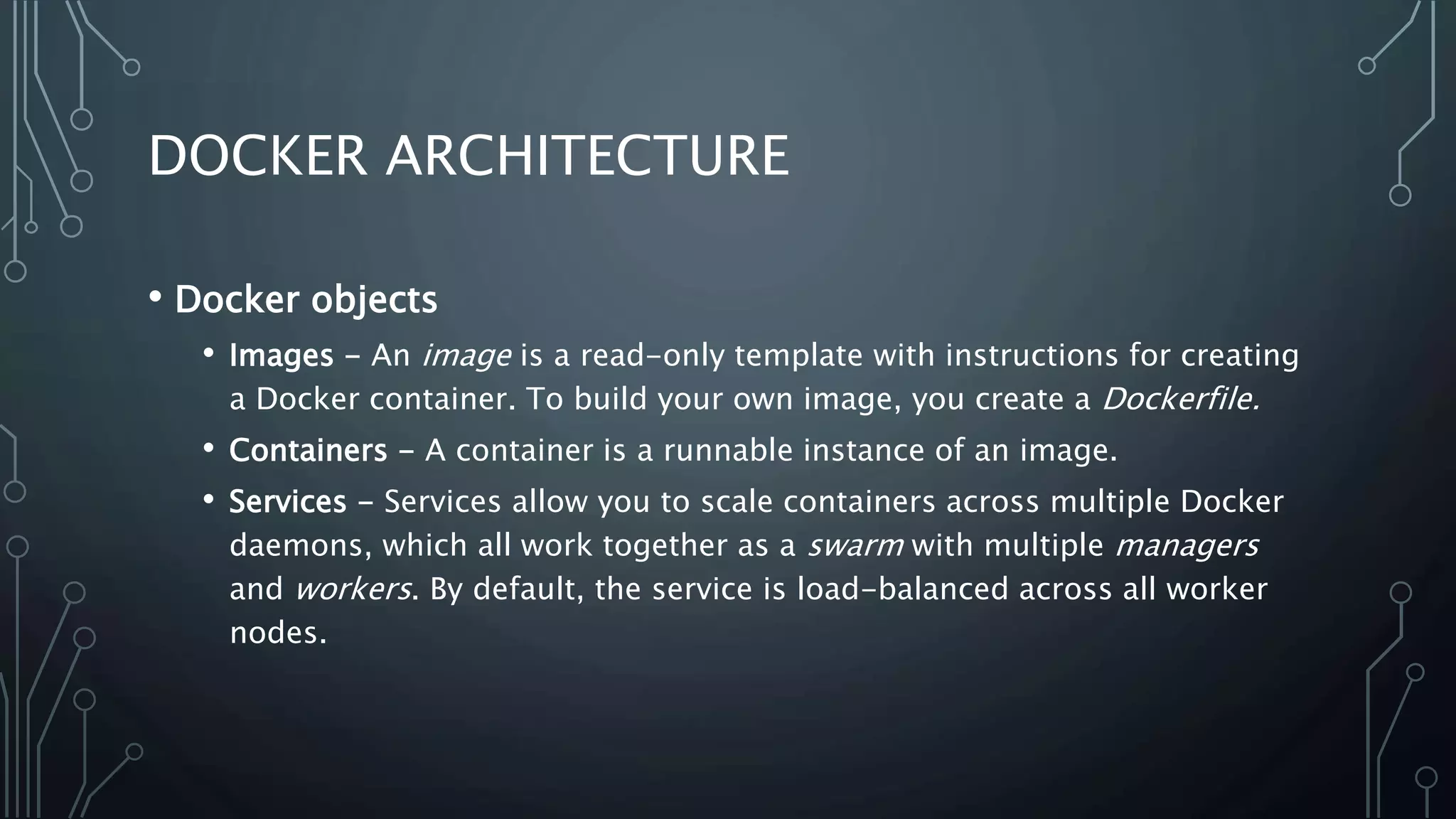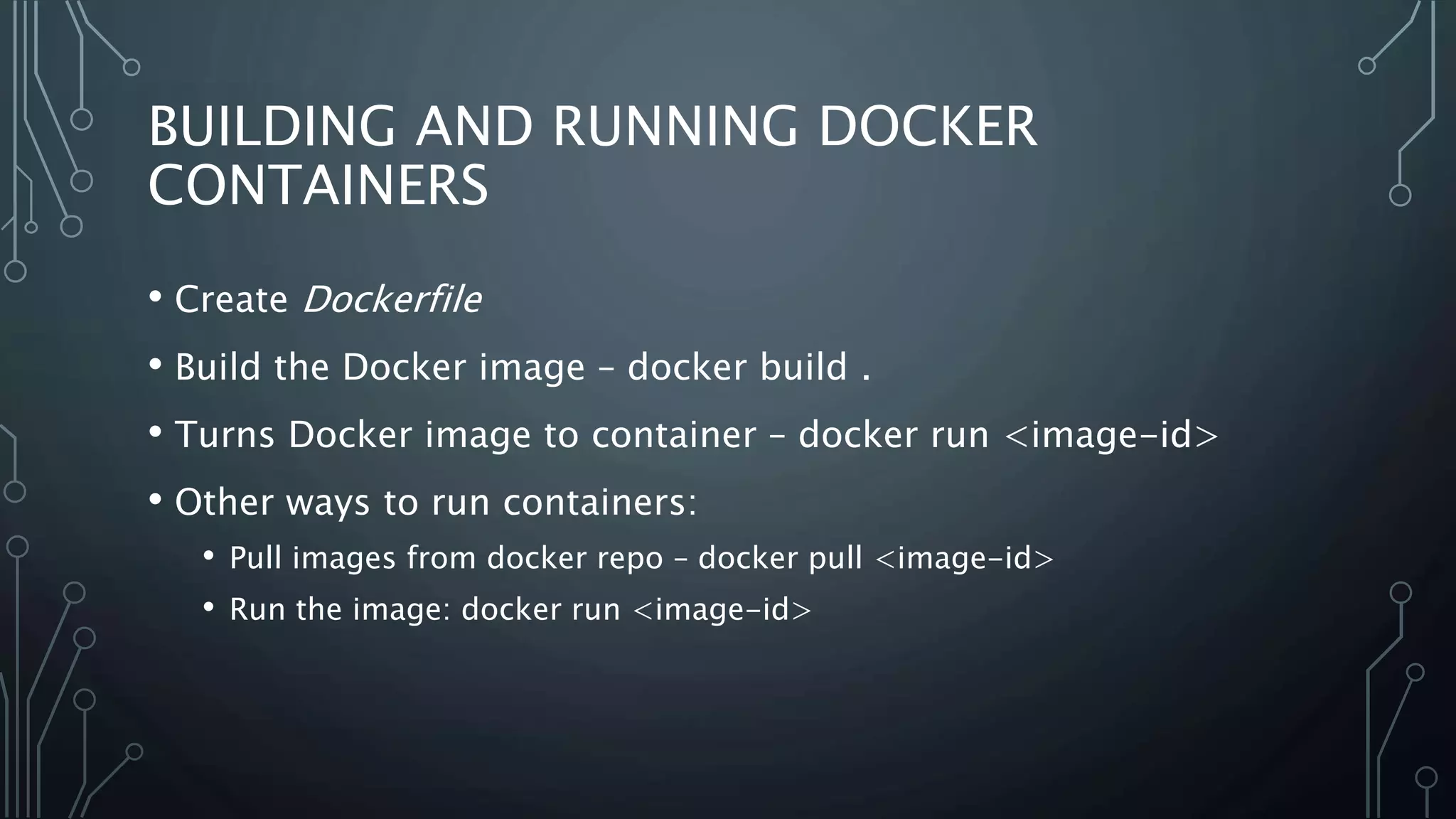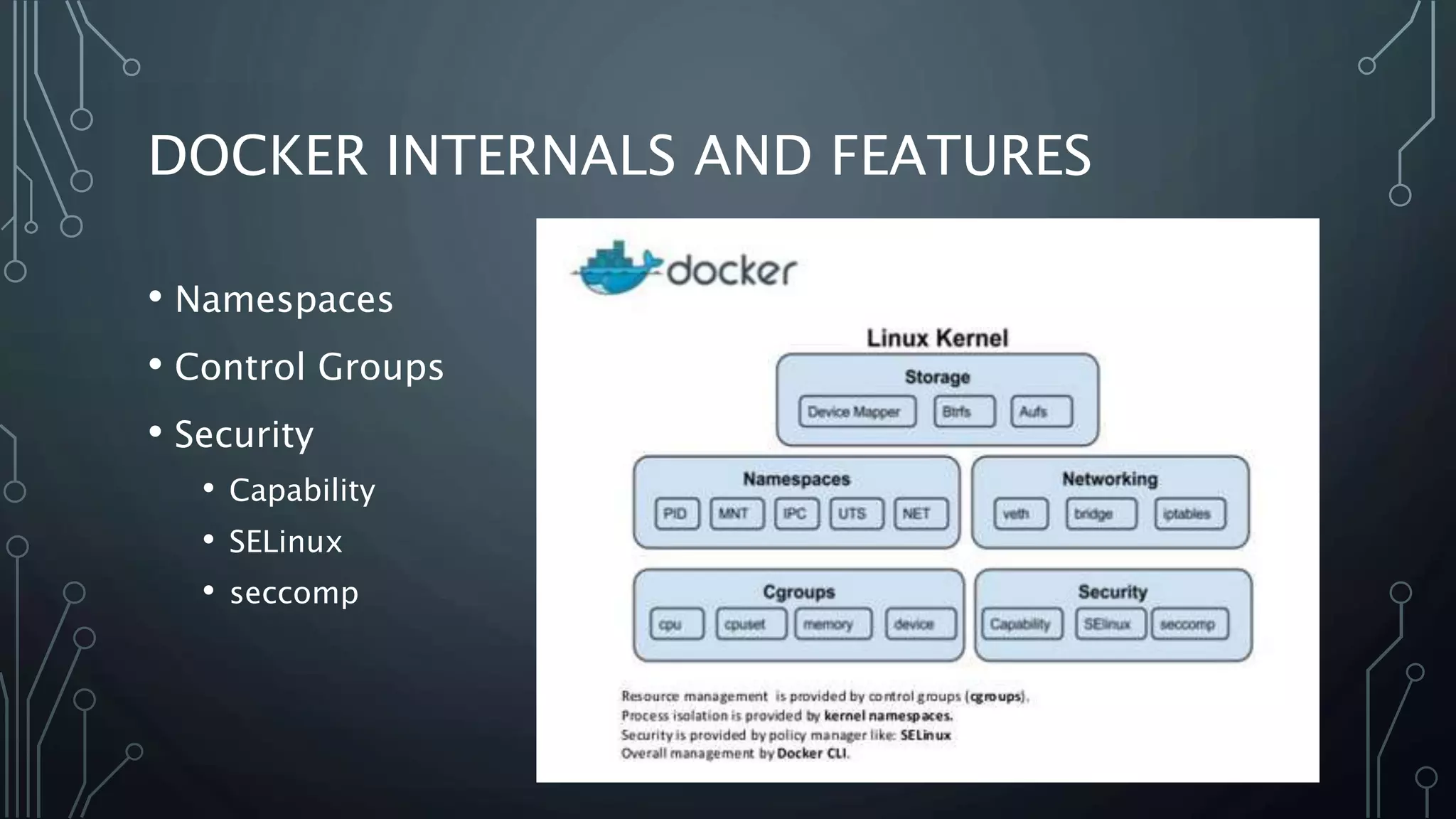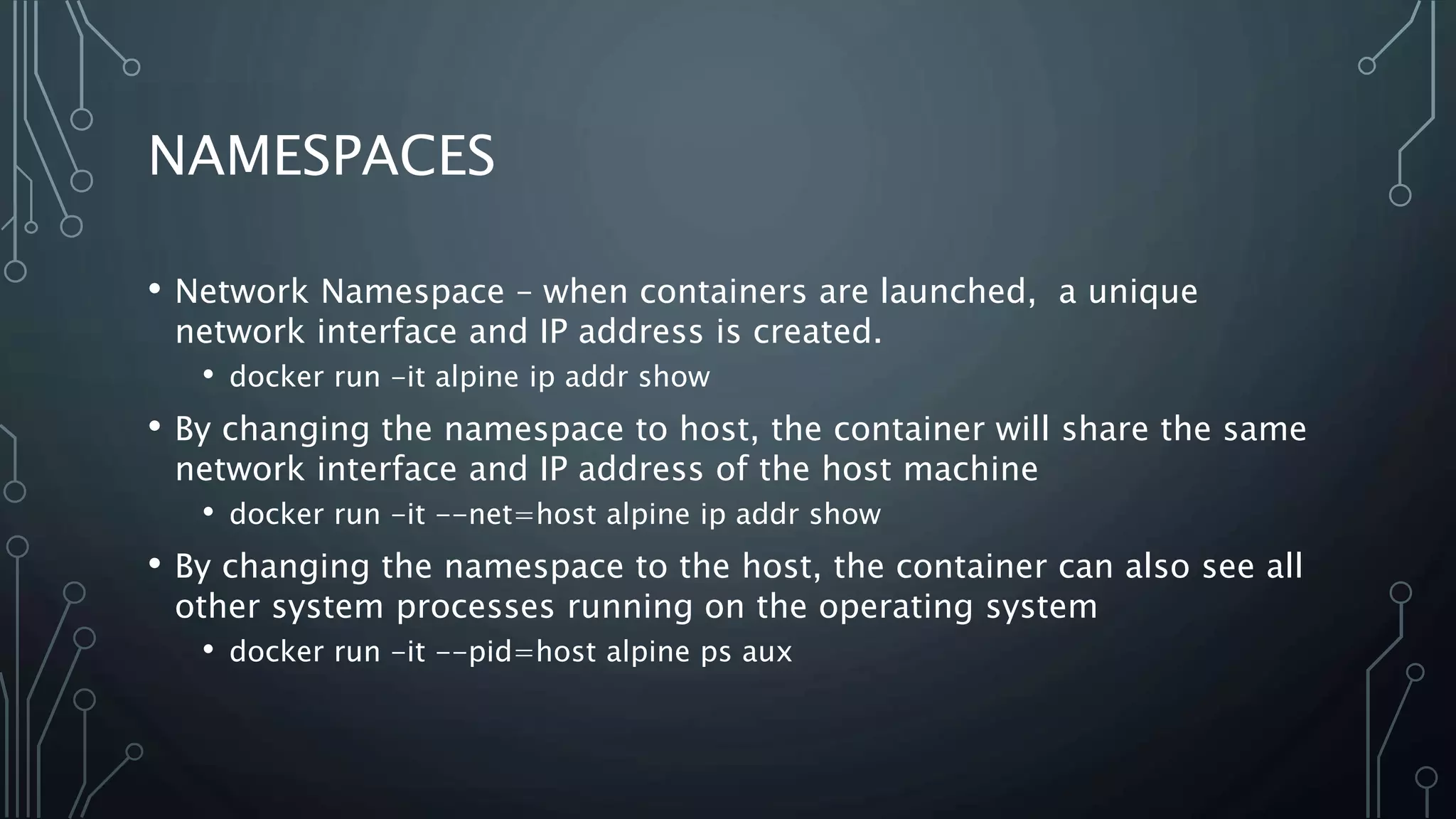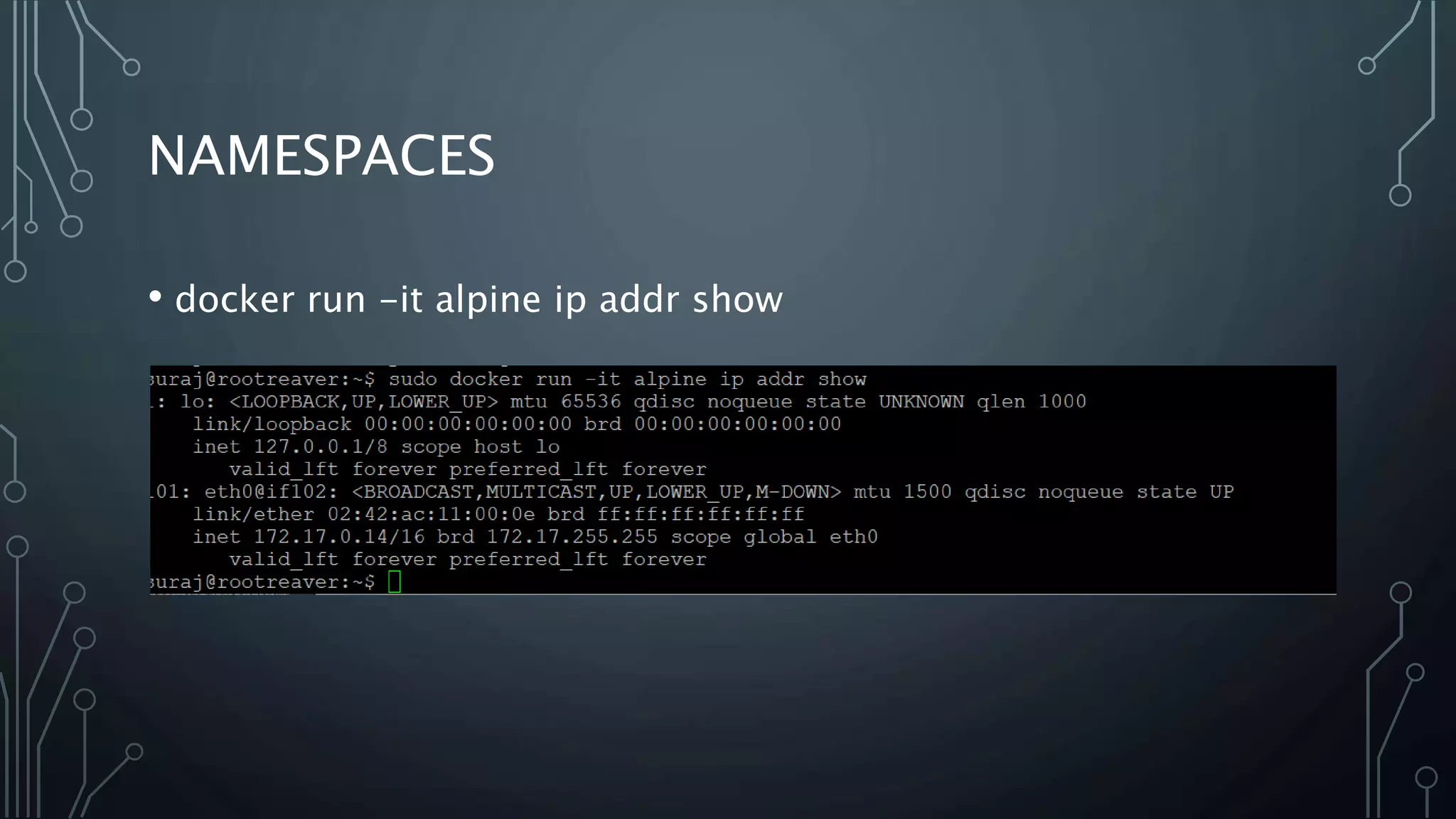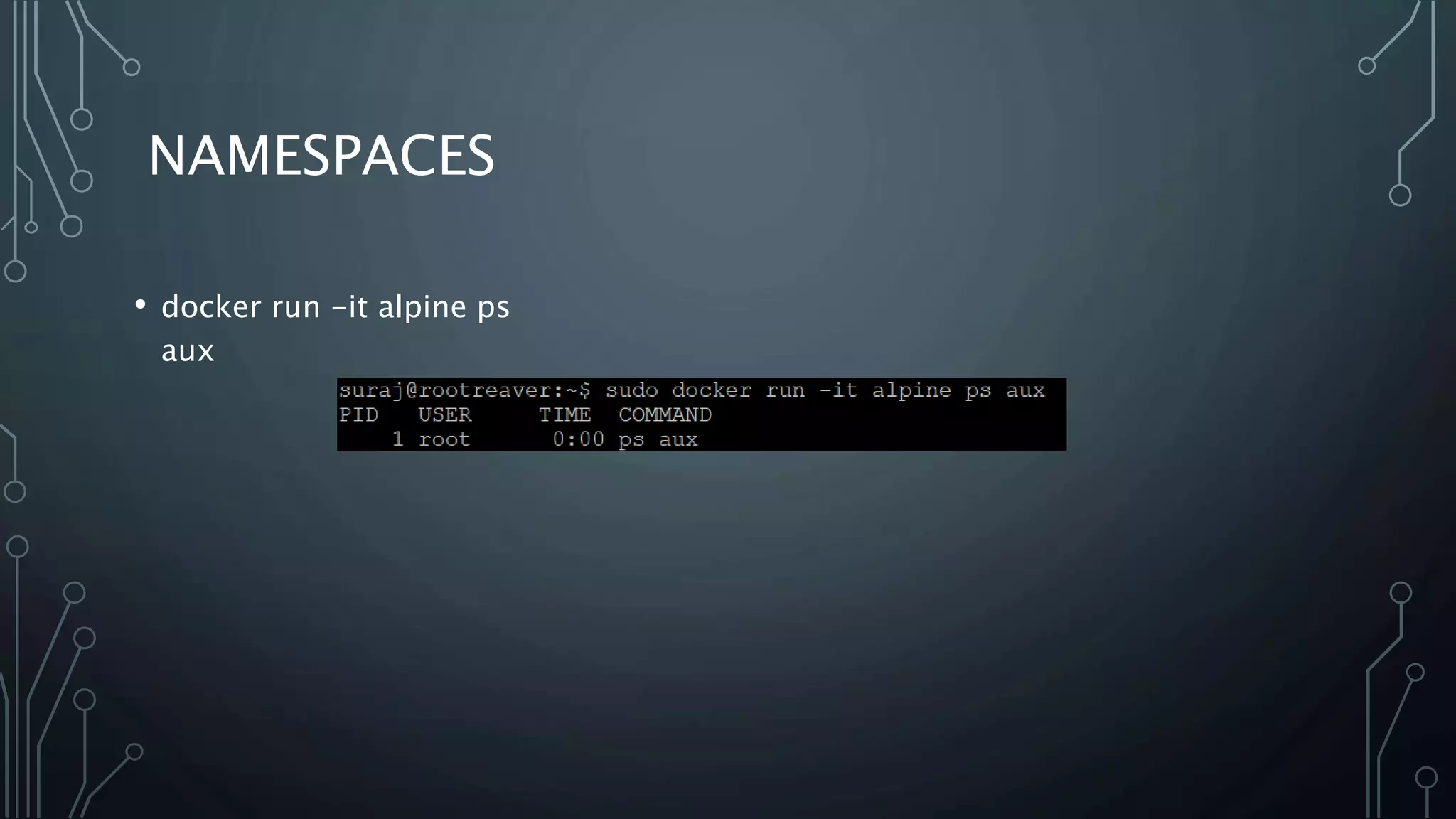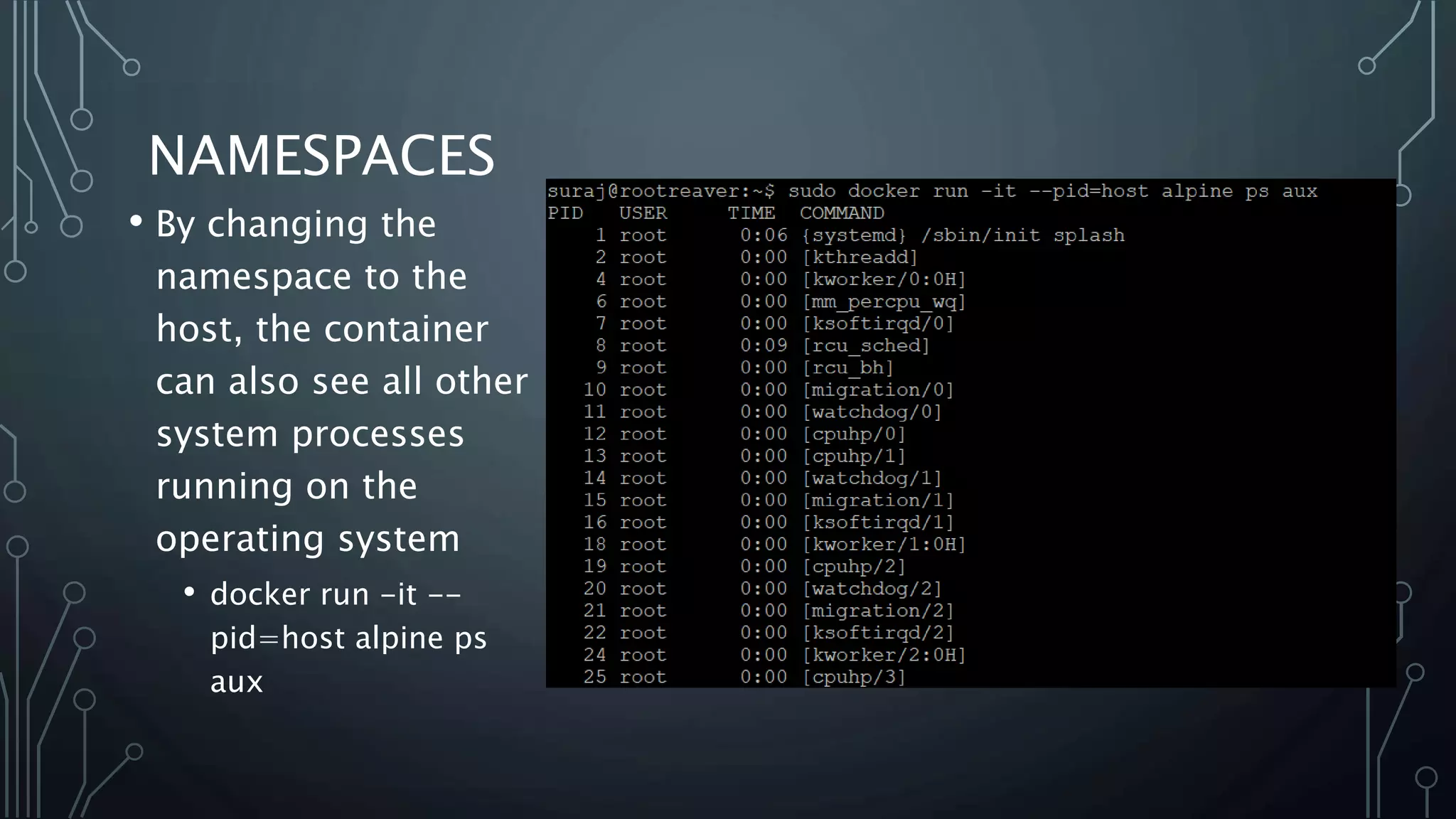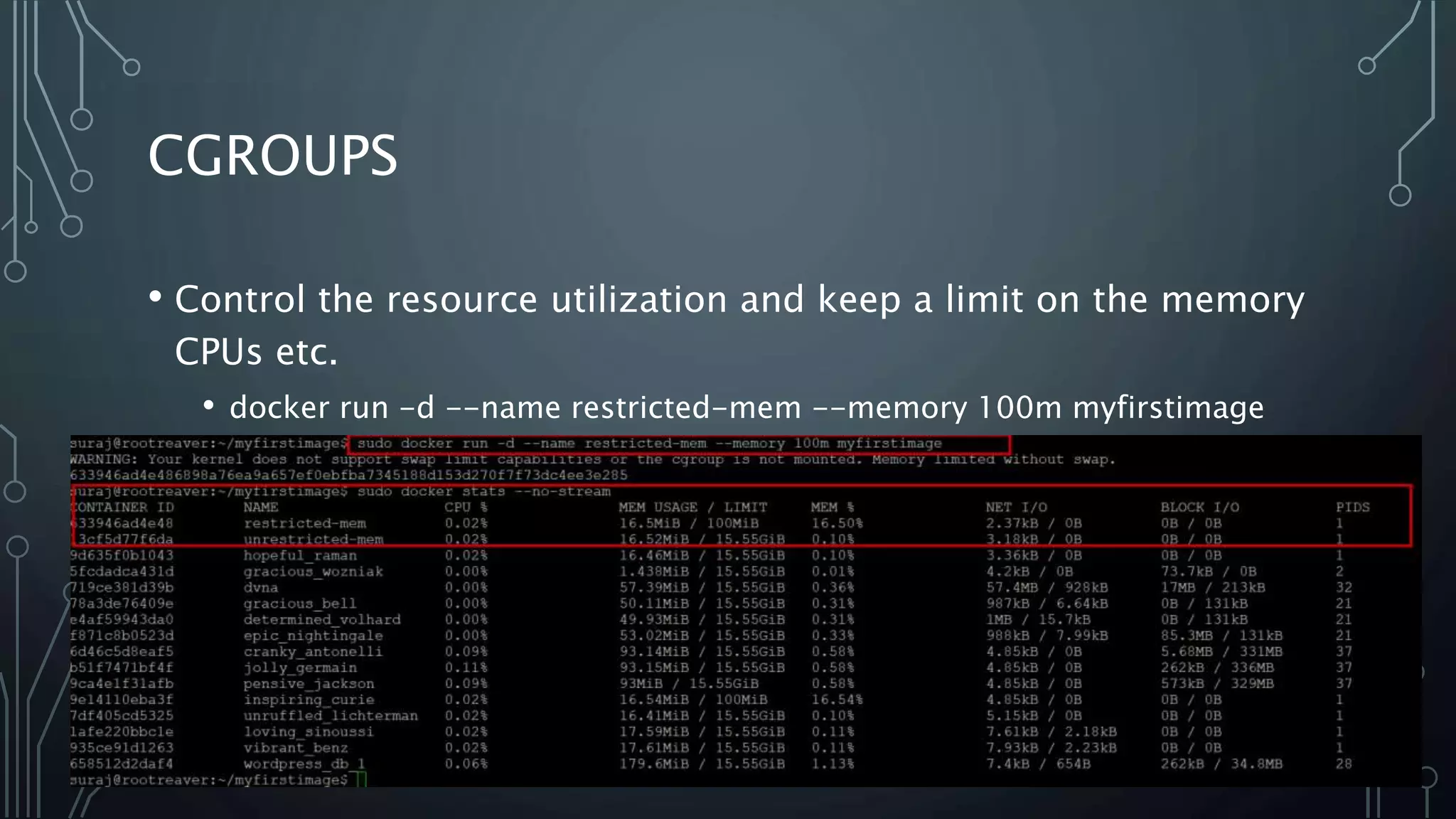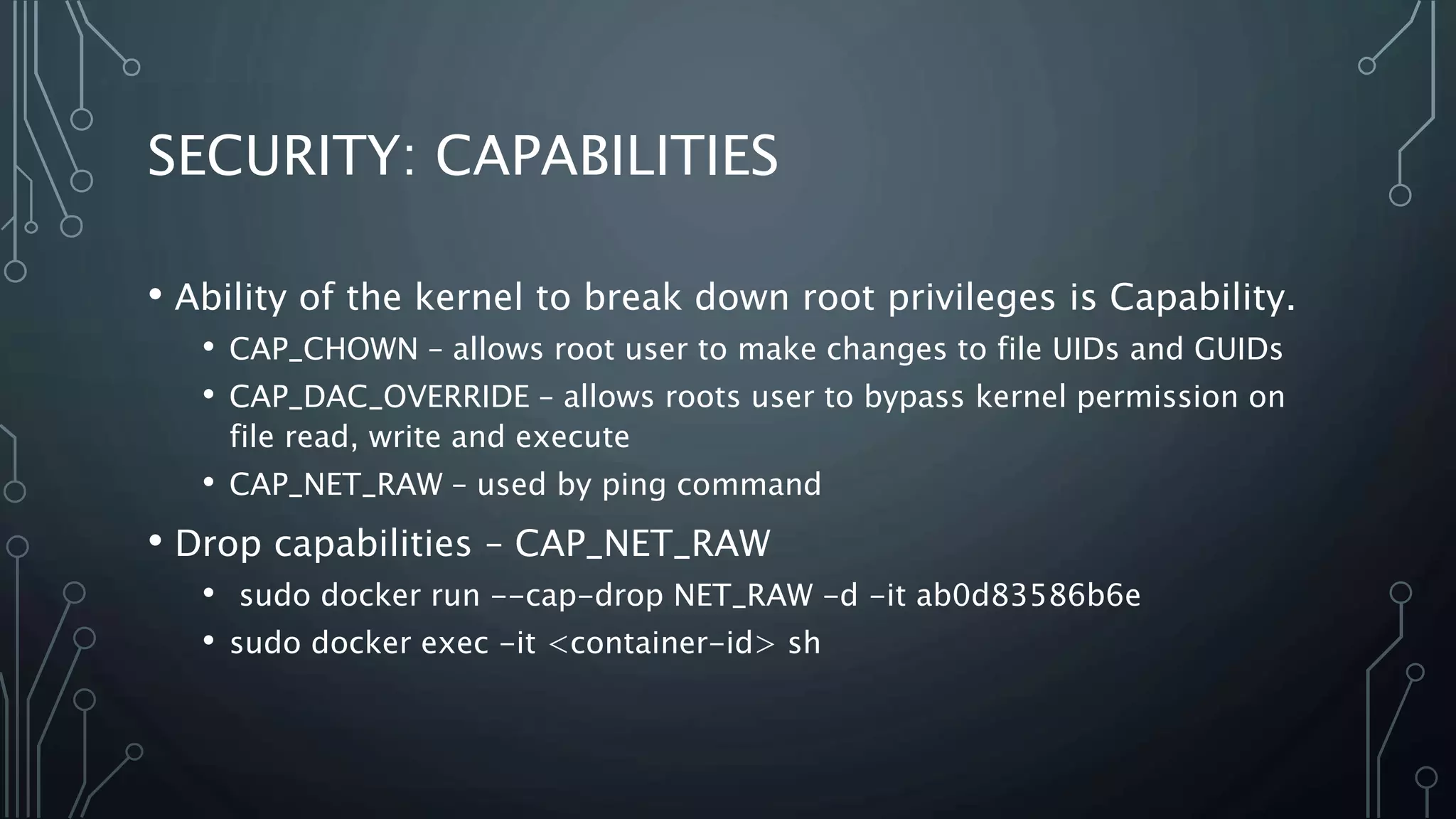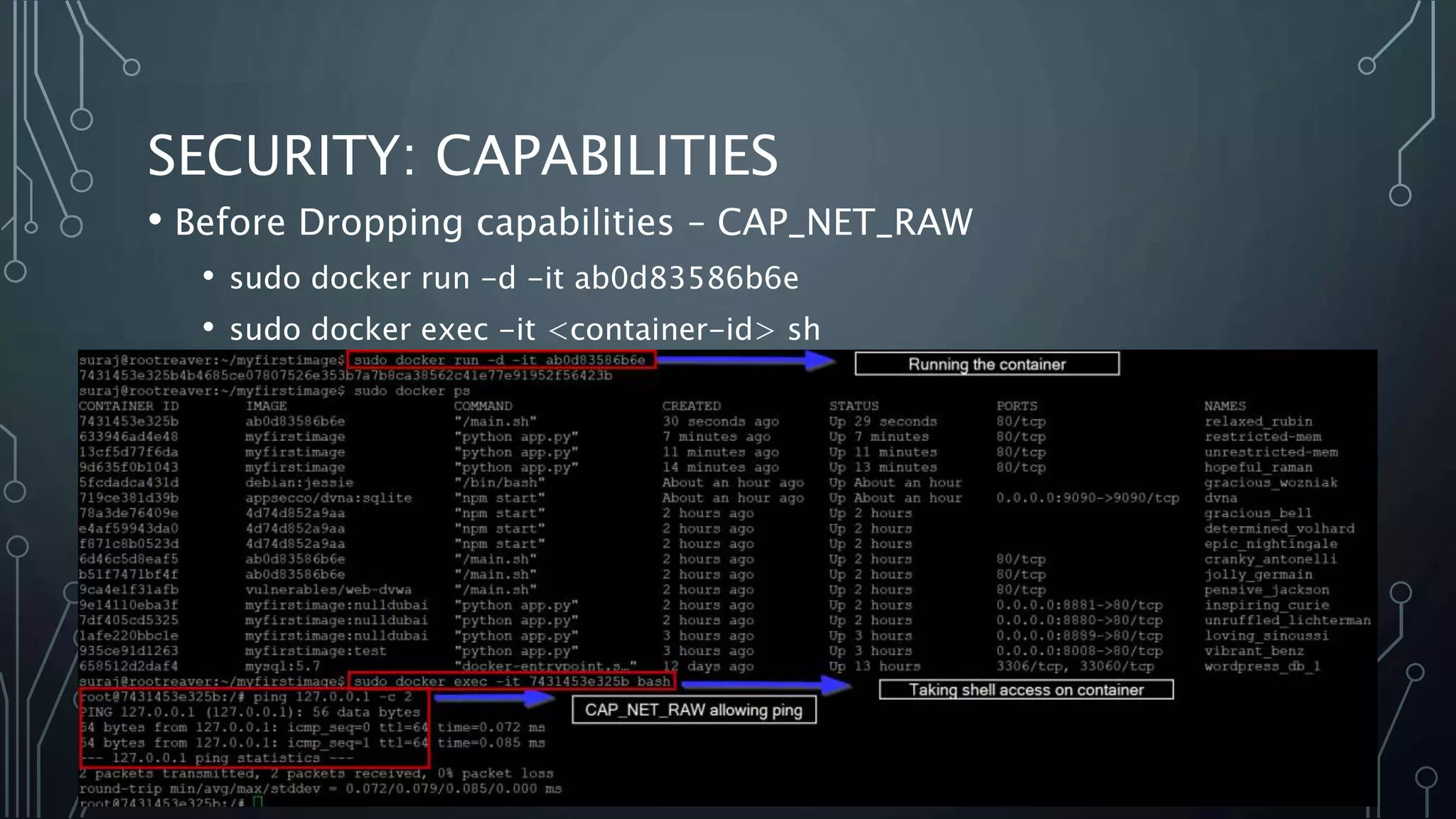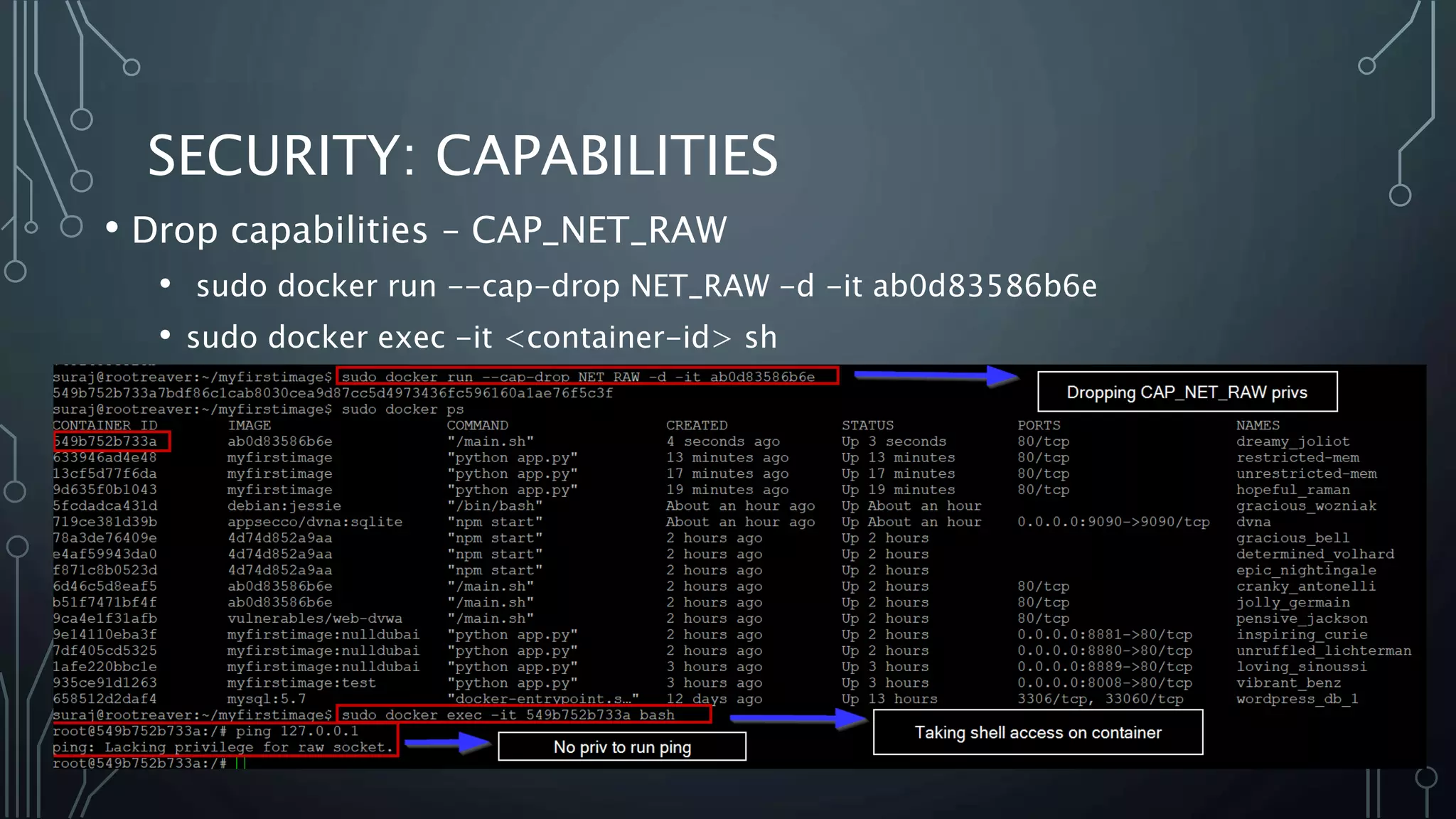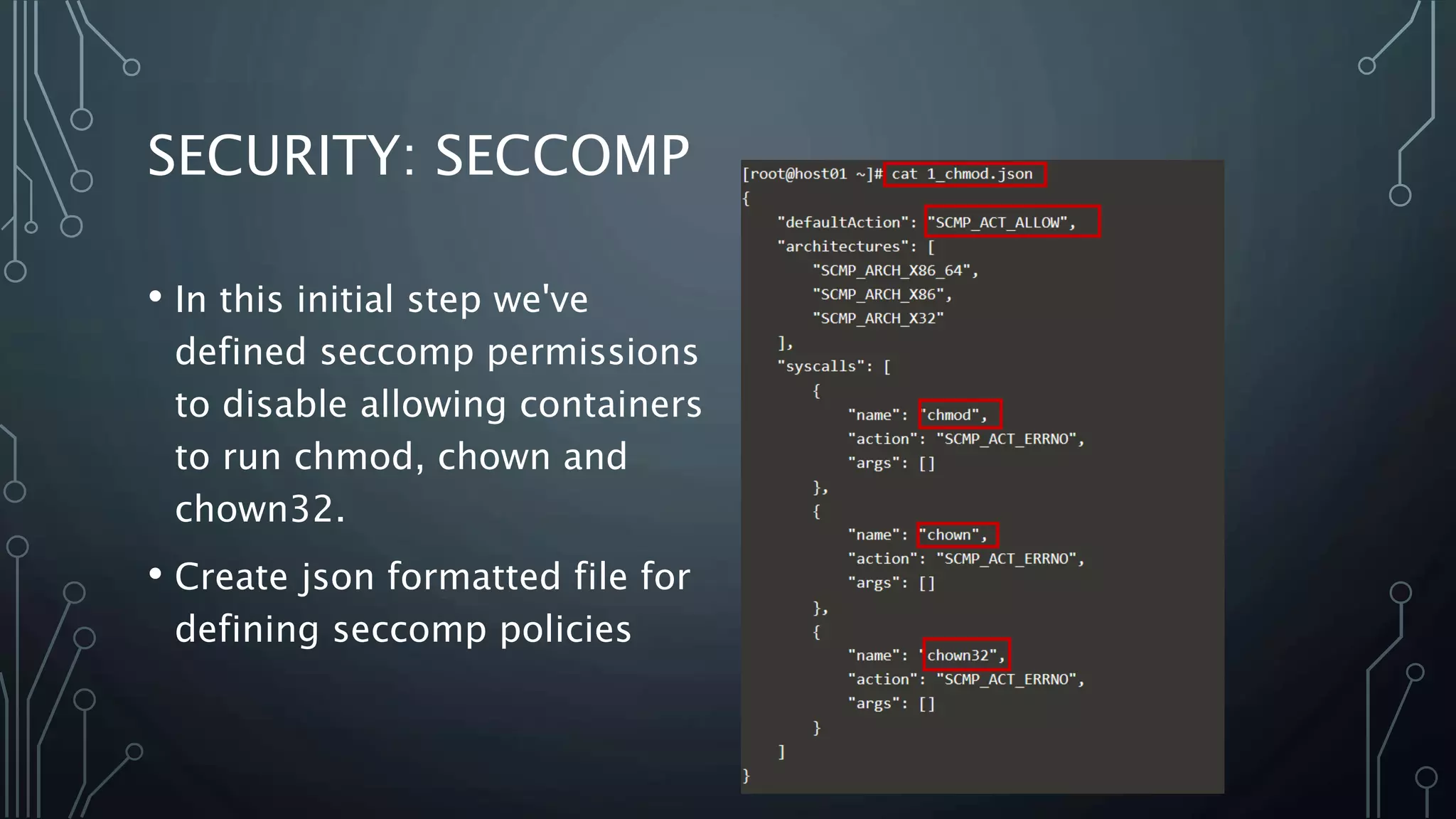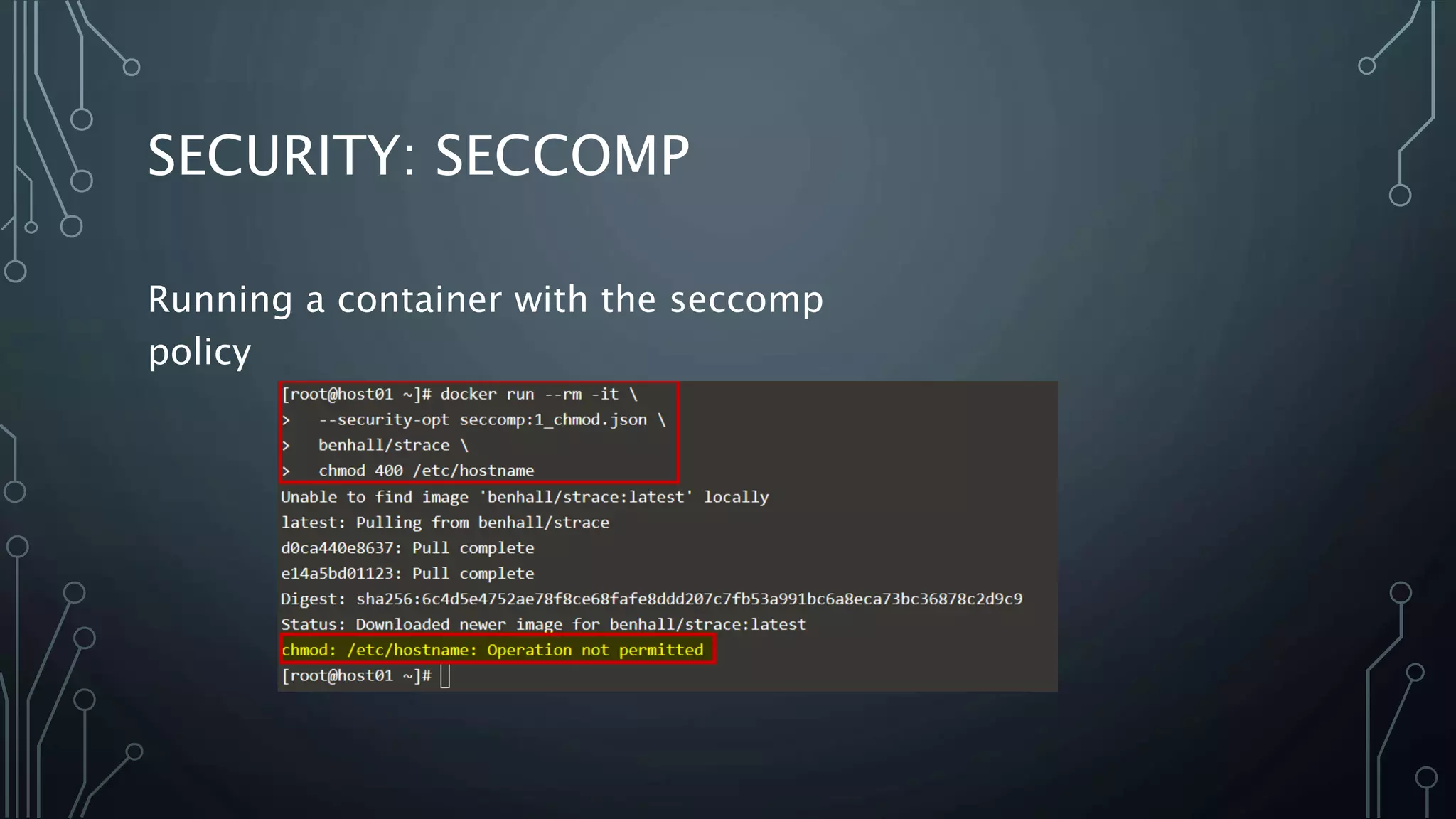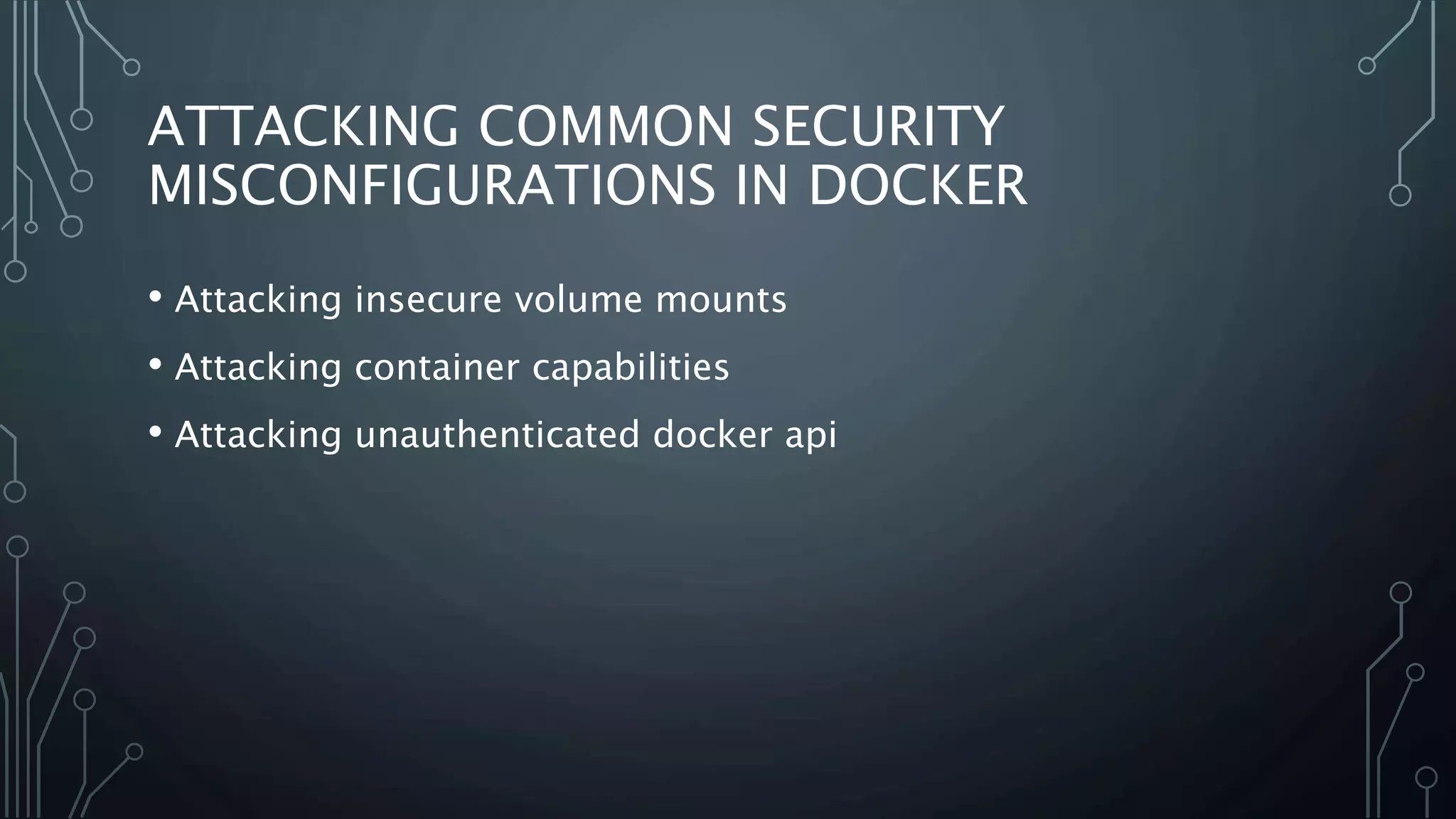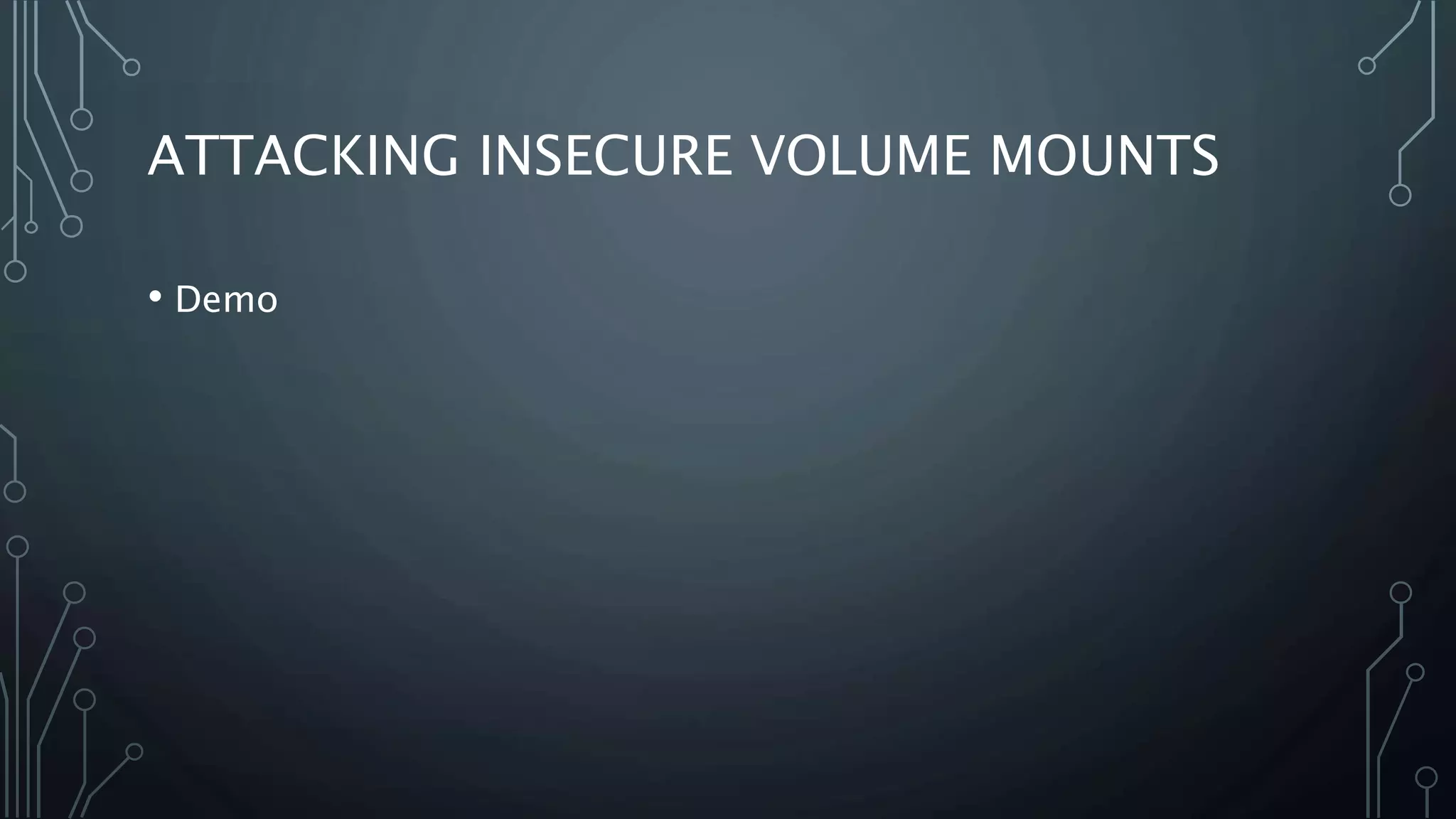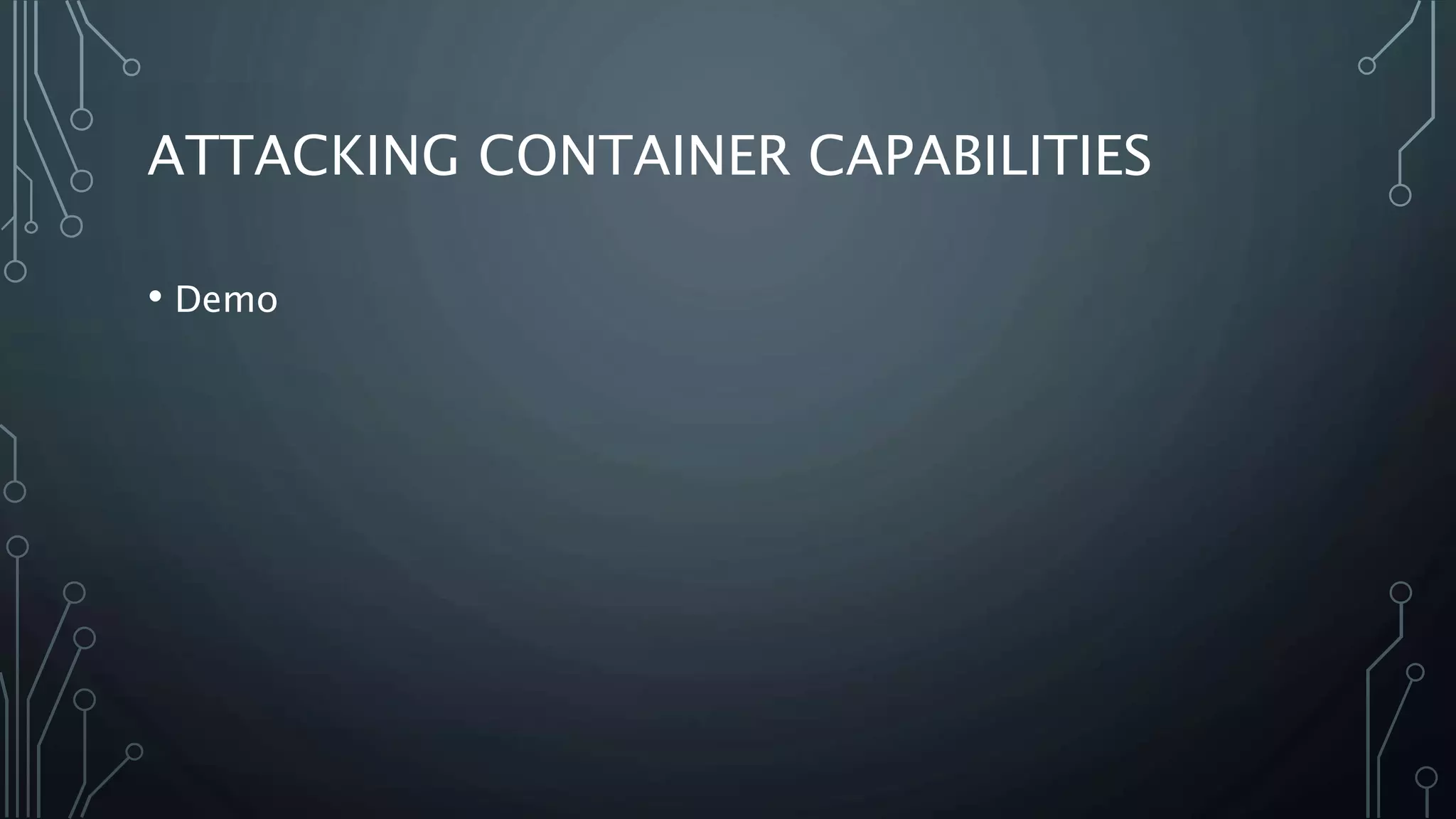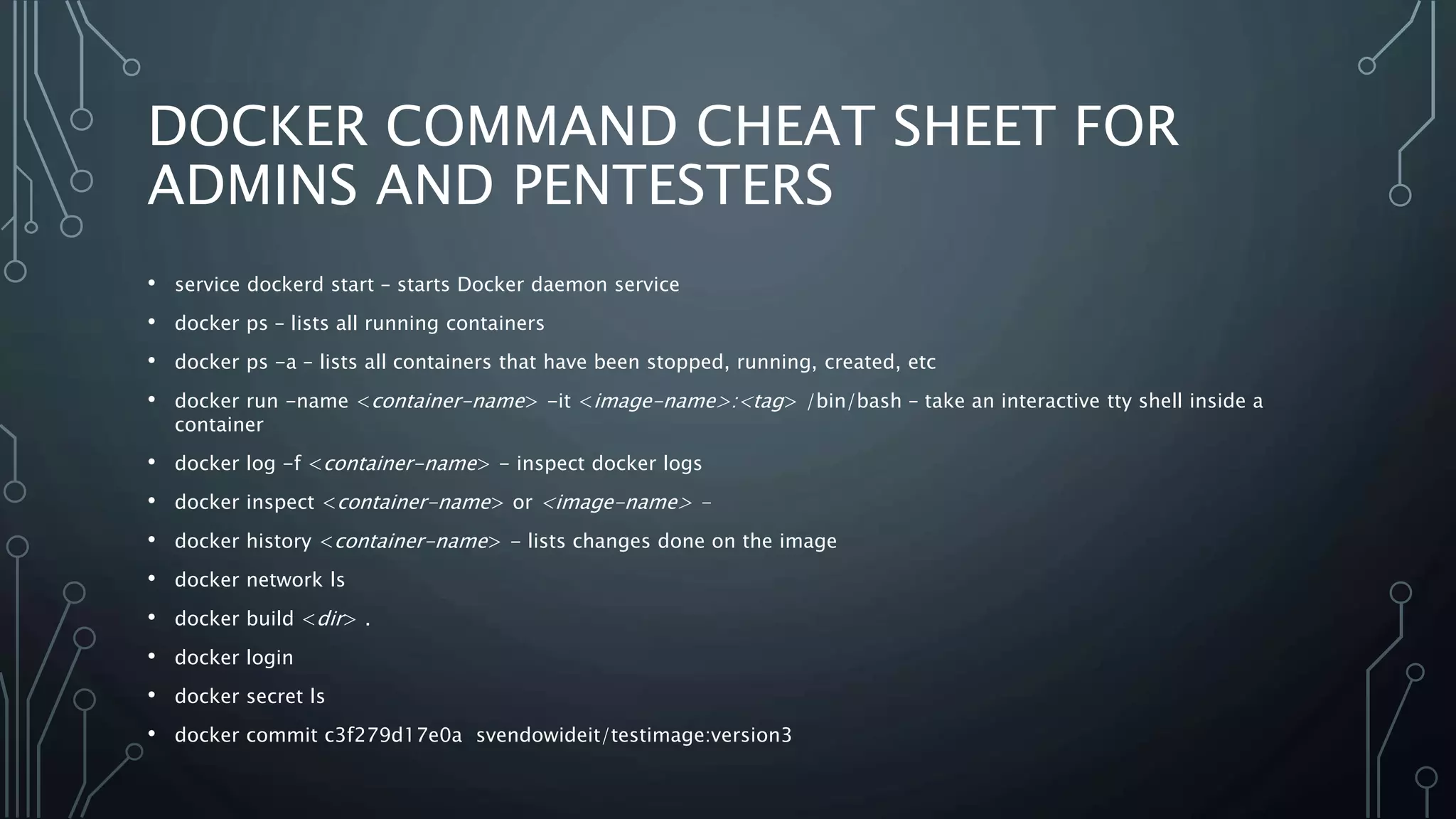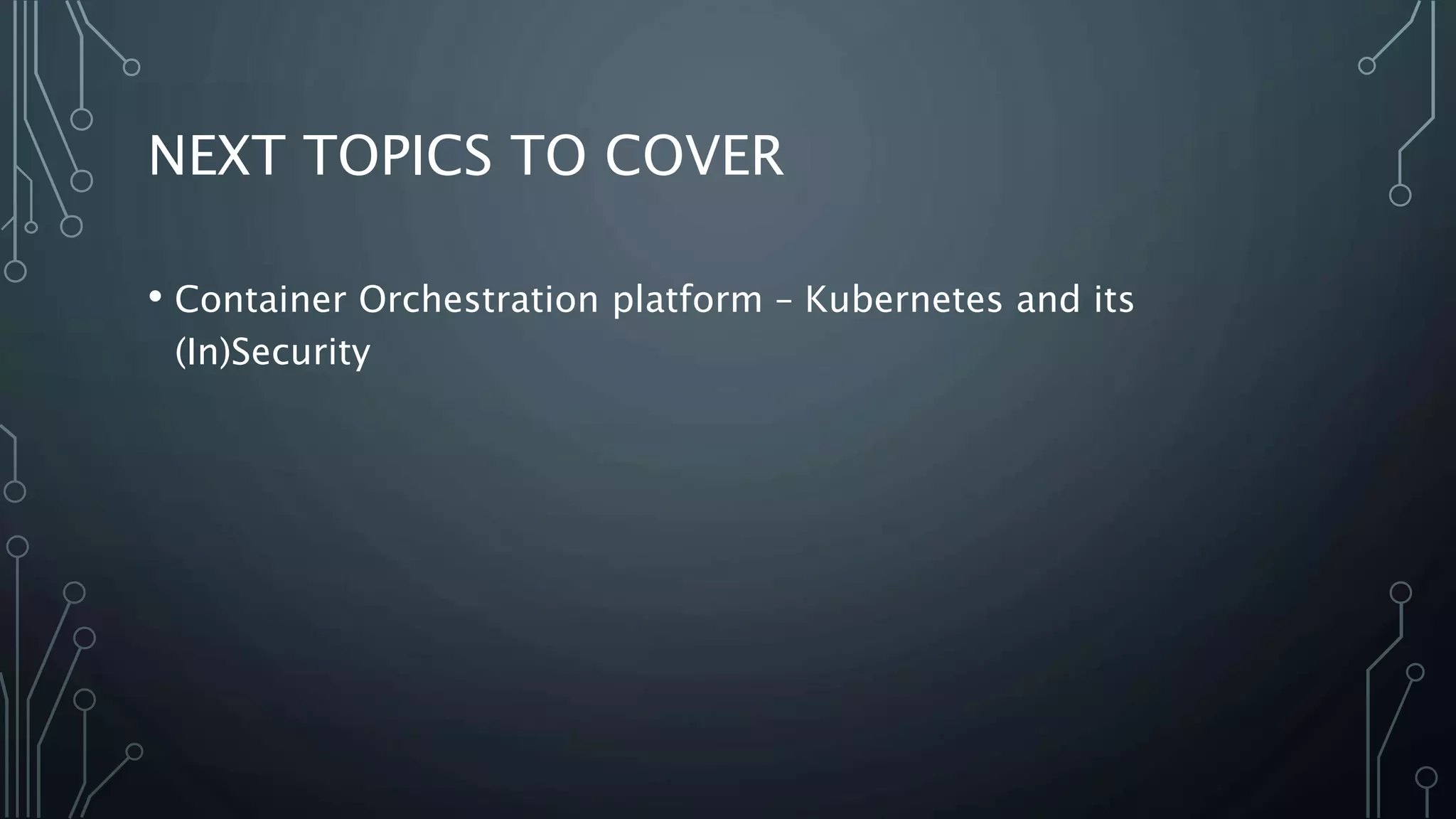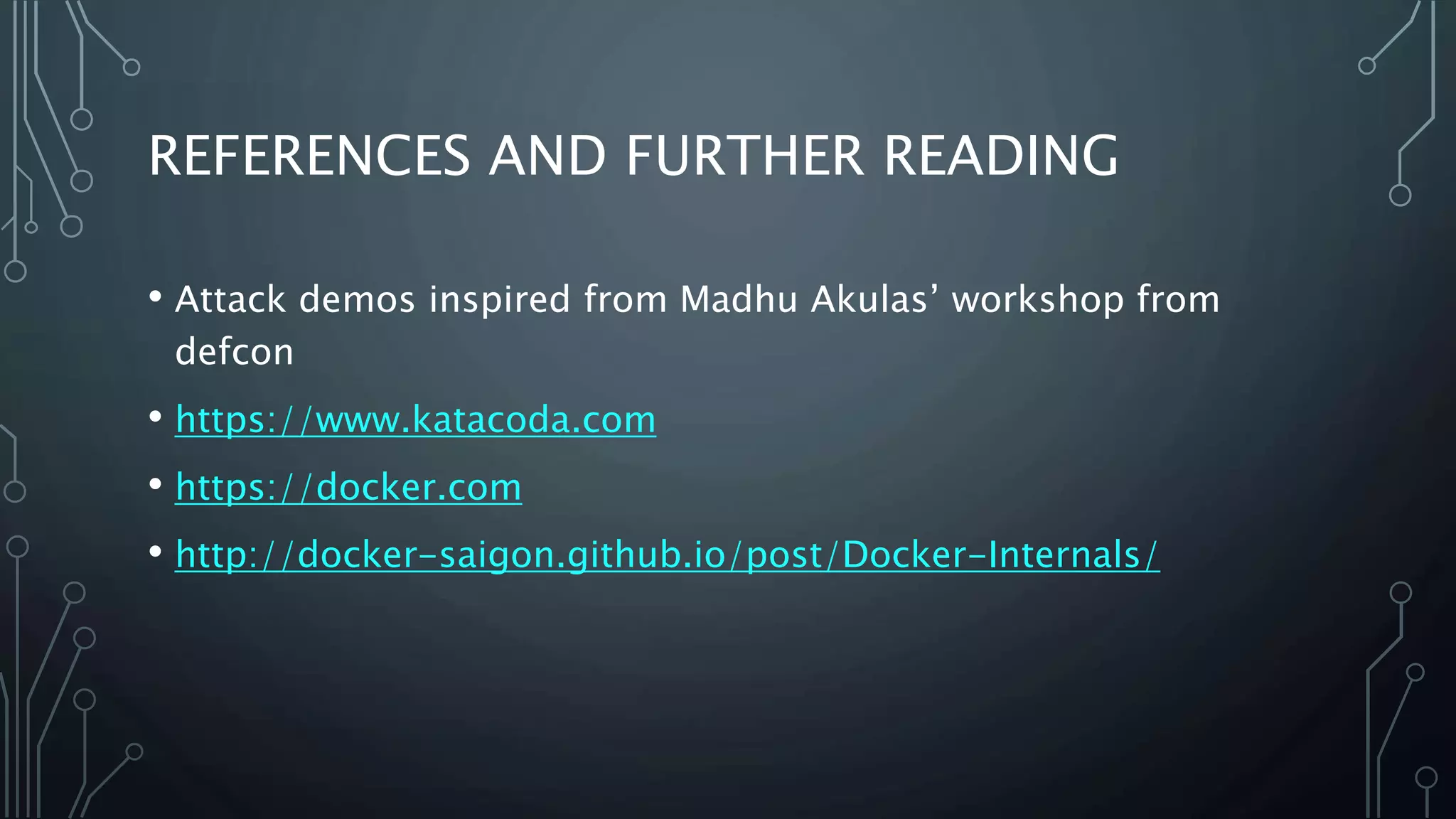The document provides an overview of Docker, a tool that simplifies the creation, deployment, and running of applications using containers. It details the history of containers, illustrates Docker architecture, and explains internal features like namespaces and cgroups, emphasizing security measures and potential misconfigurations. Additionally, it includes practical demonstrations and commands for managing Docker containers.



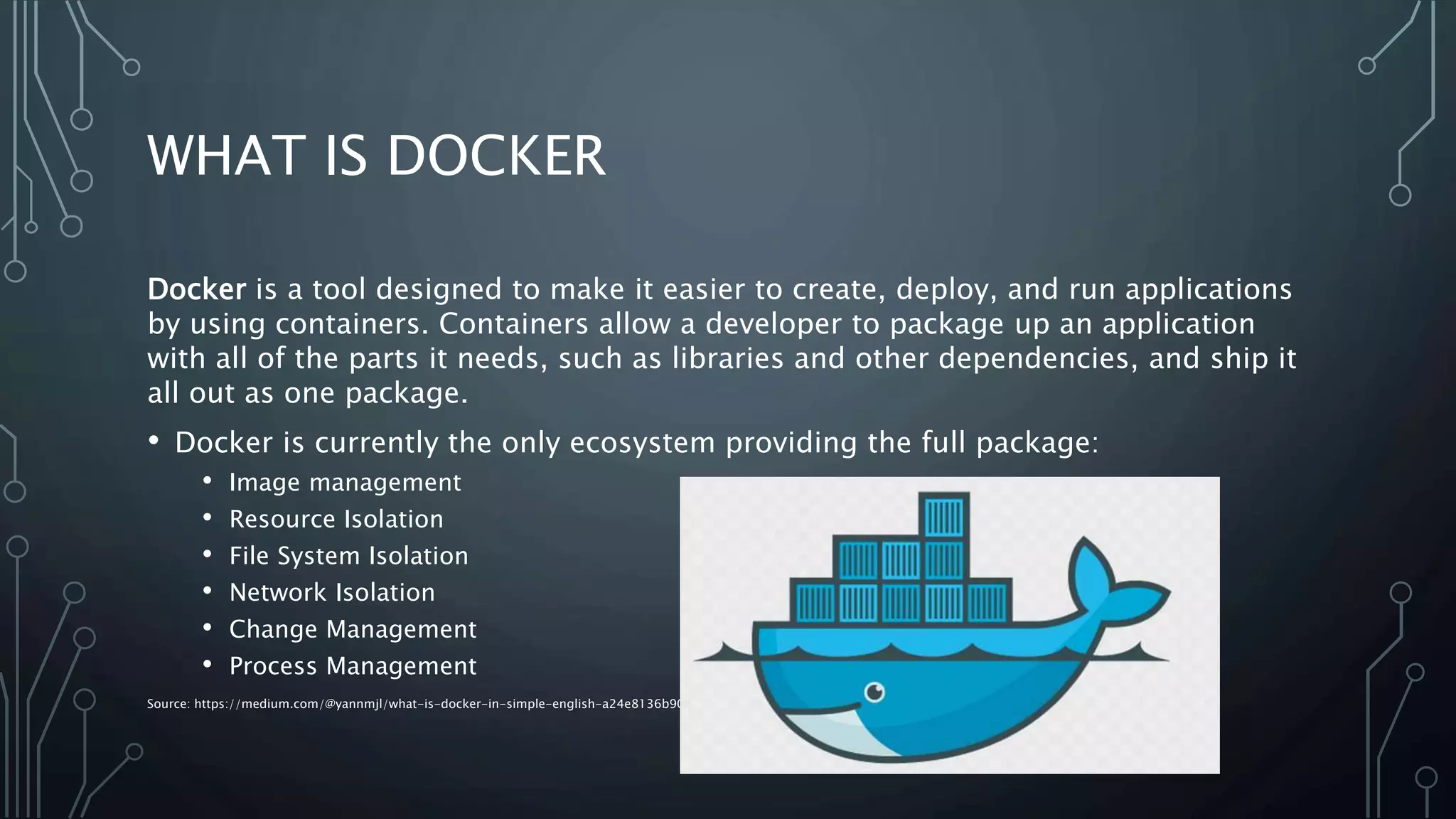
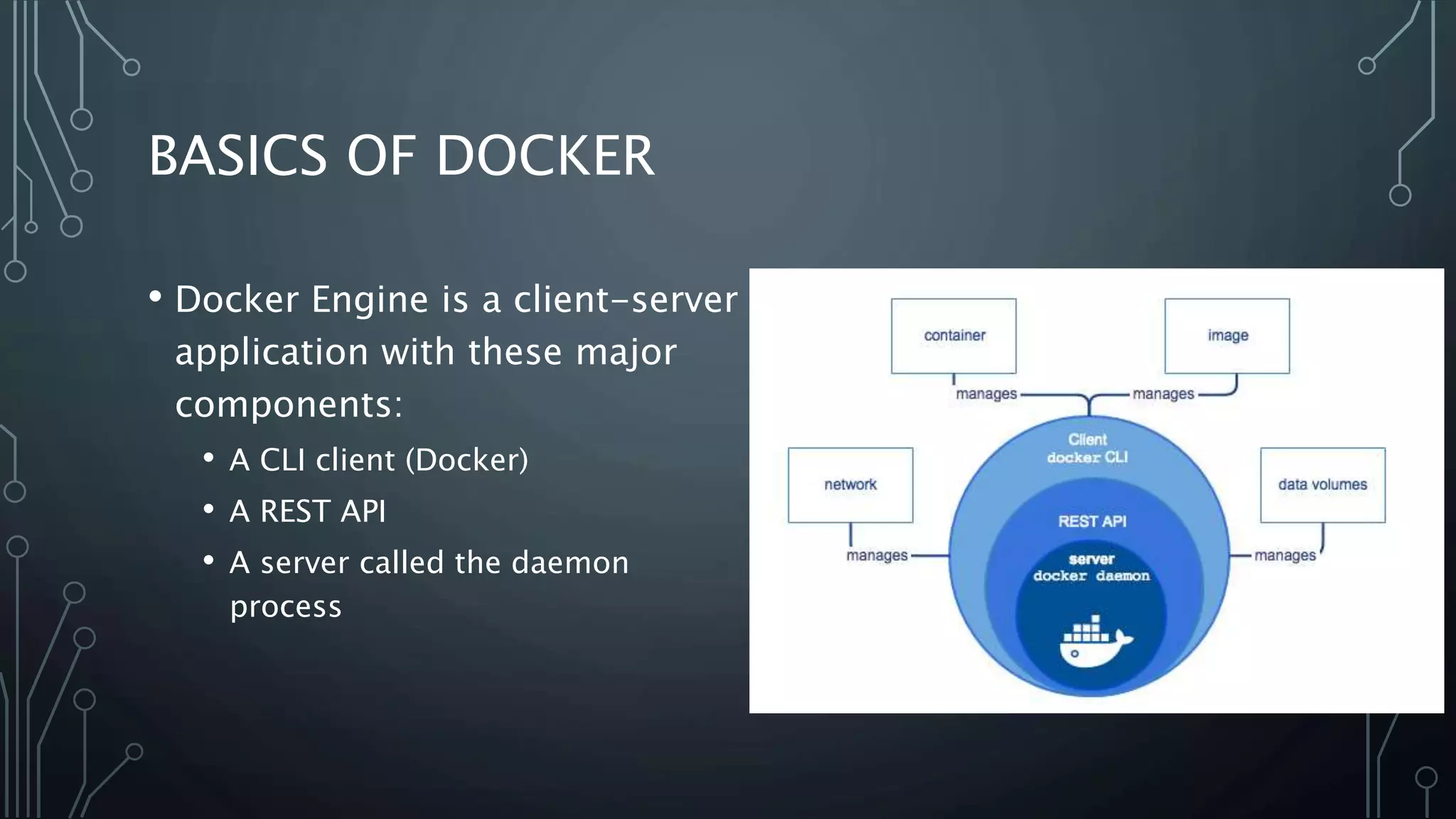


![A BRIEF HISTORY OF CONTAINERS [CONTD.]
2006
Process Containers
• It was designed for limiting, accounting and isolating resource usage (CPU, memory,
disk I/O, network) of a collection of processes. It was renamed “Control Groups
(cgroups)” a year later and eventually merged to Linux kernel 2.6.24.
2008
Linux Containers
• The most complete implementation of Linux container manager. It was implemented
using cgroups and Linux namespaces, and it works on a single Linux kernel without
requiring any patches.
2013
Docker
• Docker used LXC in its initial stages and later replaced that container manager with
its own library, libcontainer. But there’s no doubt that Docker separated itself from
the pack by offering an entire ecosystem for container management.
Source: https://blog.aquasec.com/a-brief-history-of-containers-from-1970s-
chroot-to-docker-2016](https://image.slidesharecdn.com/containersecuritynulldubai-190308195813/75/Docker-Container-Security-8-2048.jpg)
